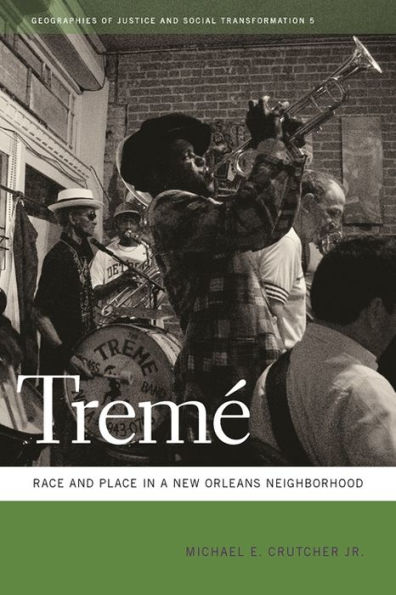Across Rampart Street from the French Quarter, the Faubourg Tremé neighborhood is arguably the most important location for African American culture in New Orleans. Closely associated with traditional jazz and “second line” parading, Tremé is now the setting for an eponymous television series created by David Simon (best known for his work on The Wire).
Michael Crutcher argues that Tremé’s story is essentially spatial—a story of how neighborhood boundaries are drawn and take on meaning and of how places within neighborhoods are made and unmade by people and politics. Tremé has long been sealed off from more prominent parts of the city, originally by the fortified walls that gave Rampart Street its name, and so has become a refuge for less powerful New Orleanians. This notion of Tremé as a safe haven—the flipside of its reputation as a “neglected” place—has been essential to its role as a cultural incubator, Crutcher argues, from the antebellum slave dances in Congo Square to jazz pickup sessions at Joe’s Cozy Corner.
Tremé takes up a wide range of issues in urban life, including highway construction, gentrification, and the role of public architecture in sustaining collective memory. Equally sensitive both to black-white relations and to differences within the African American community, it is a vivid evocation of one of America’s most distinctive places.
Across Rampart Street from the French Quarter, the Faubourg Tremé neighborhood is arguably the most important location for African American culture in New Orleans. Closely associated with traditional jazz and “second line” parading, Tremé is now the setting for an eponymous television series created by David Simon (best known for his work on The Wire).
Michael Crutcher argues that Tremé’s story is essentially spatial—a story of how neighborhood boundaries are drawn and take on meaning and of how places within neighborhoods are made and unmade by people and politics. Tremé has long been sealed off from more prominent parts of the city, originally by the fortified walls that gave Rampart Street its name, and so has become a refuge for less powerful New Orleanians. This notion of Tremé as a safe haven—the flipside of its reputation as a “neglected” place—has been essential to its role as a cultural incubator, Crutcher argues, from the antebellum slave dances in Congo Square to jazz pickup sessions at Joe’s Cozy Corner.
Tremé takes up a wide range of issues in urban life, including highway construction, gentrification, and the role of public architecture in sustaining collective memory. Equally sensitive both to black-white relations and to differences within the African American community, it is a vivid evocation of one of America’s most distinctive places.

Tremé: Race and Place in a New Orleans Neighborhood
204
Tremé: Race and Place in a New Orleans Neighborhood
204eBook
Related collections and offers

Product Details
| ISBN-13: | 9780820337609 |
|---|---|
| Publisher: | University of Georgia Press |
| Publication date: | 12/01/2010 |
| Series: | Geographies of Justice and Social Transformation Series , #5 |
| Sold by: | Barnes & Noble |
| Format: | eBook |
| Pages: | 204 |
| File size: | 2 MB |
